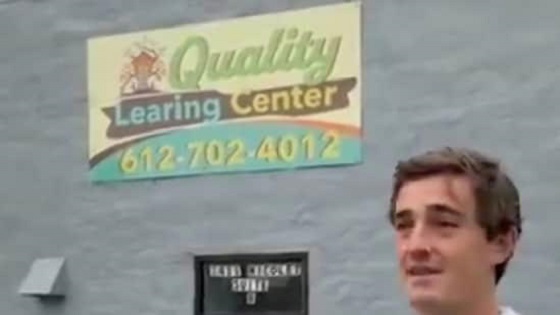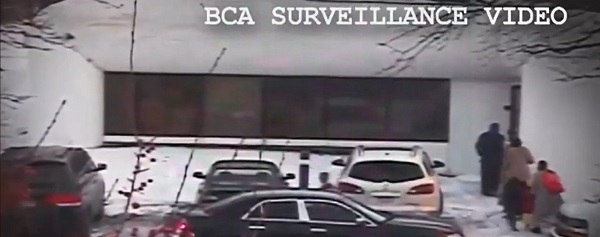Education
Simply throwing more money at schools will not increase student test scores

From the Fraser Institute
Alberta, Quebec and Ontario had the highest average test scores, with each spending markedly less per student than Manitoba (C$15,473) and Saskatchewan (C$17,194), the two highest-spending provinces who both had significantly lower test scores than lowest-spending B.C. (C$12,132).
“If you think education is expensive, try ignorance” was a popular bumper sticker back in the day. These days there’s broad acceptance of the need for adequate spending on this inherently expensive process. But do we get our money’s worth? Do Canada and the provinces get a good return on their education spending or should we spend more?
To help answer that question, it helps to broaden our perspective beyond Canada’s borders. According to a recent study published by the Fraser Institute, in 2018 (the latest year of complete and comparable data) there was a wide range of K-12 education spending among 33 high-income countries, ranging from Luxembourg (US$21,968 per student) to Lithuania, (US$6,551 per student). Canada (US$11,771) ranked 14th-lowest, just above the average and well below higher-spending Norway, Austria, Korea, Denmark and the United States.
There was less variation in provincial spending, with highest-spending Saskatchewan and Manitoba spending similar amounts to the U.S. and Germany, and British Columbia spending notably less, close to amounts spent by Finland and Japan.
So, Canada’s K-12 spending was in the mid-range of spending among high-income countries. What did we get, in terms of student performance, for this level of spending?
Based on results of the Programme for International Student Assessment (PISA), which tests 15-year-old students worldwide every three years on reading, math and science, Canada’s average test performance was significantly higher than most other countries—specifically, Canada’s 15-year-olds had higher average scores than their peers in 11 higher-spending countries including Sweden, Germany, the United Kingdom and the U.S.
There was a similar pattern between school spending and student performance in the provinces. Alberta, Quebec and Ontario had the highest average test scores, with each spending markedly less per student than Manitoba (C$15,473) and Saskatchewan (C$17,194), the two highest-spending provinces who both had significantly lower test scores than lowest-spending B.C. (C$12,132).
Of course, due to the many differences between education systems in different countries, global comparisons are less than precise, but clearly higher K-12 spending is not reliably associated with higher test scores. And there’s obviously a lot more to good education than doing well on standardized tests. Yet doing well in reading, math and science—the core PISA subjects—is important because these subjects provide a necessary foundation for future higher-level study and employment.
These findings raise a fundamental question. How can we close the gaps between test scores among countries and provinces if poorer-performing systems already spend more than those achieving higher scores? Given the poor track record of popular and expensive reforms such as smaller class sizes and extended teacher education, there’s no obvious answer to this question. Simply shovelling more money into school budgets will not, by itself, make a difference unless effective ways to improve student performance can be found.
Instead, education systems should encourage greater school-level decision-making to better serve local circumstances. And there’s also much to gain by paying at least as much attention to student performance as spending.
Author:
Alberta
Schools should go back to basics to mitigate effects of AI

From the Fraser Institute
Odds are, you can’t tell whether this sentence was written by AI. Schools across Canada face the same problem. And happily, some are finding simple solutions.
Manitoba’s Division Scolaire Franco-Manitobaine recently issued new guidelines for teachers, to only assign optional homework and reading in grades Kindergarten to six, and limit homework in grades seven to 12. The reason? The proliferation of generative artificial intelligence (AI) chatbots such as ChatGPT make it very difficult for teachers, juggling a heavy workload, to discern genuine student work from AI-generated text. In fact, according to Division superintendent Alain Laberge, “Most of the [after-school assignment] submissions, we find, are coming from AI, to be quite honest.”
This problem isn’t limited to Manitoba, of course.
Two provincial doors down, in Alberta, new data analysis revealed that high school report card grades are rising while scores on provincewide assessments are not—particularly since 2022, the year ChatGPT was released. Report cards account for take-home work, while standardized tests are written in person, in the presence of teaching staff.
Specifically, from 2016 to 2019, the average standardized test score in Alberta across a range of subjects was 64 while the report card grade was 73.3—or 9.3 percentage points higher). From 2022 and 2024, the gap increased to 12.5 percentage points. (Data for 2020 and 2021 are unavailable due to COVID school closures.)
In lieu of take-home work, the Division Scolaire Franco-Manitobaine recommends nightly reading for students, which is a great idea. Having students read nightly doesn’t cost schools a dime but it’s strongly associated with improving academic outcomes.
According to a Programme for International Student Assessment (PISA) analysis of 174,000 student scores across 32 countries, the connection between daily reading and literacy was “moderately strong and meaningful,” and reading engagement affects reading achievement more than the socioeconomic status, gender or family structure of students.
All of this points to an undeniable shift in education—that is, teachers are losing a once-valuable tool (homework) and shifting more work back into the classroom. And while new technologies will continue to change the education landscape in heretofore unknown ways, one time-tested winning strategy is to go back to basics.
And some of “the basics” have slipped rapidly away. Some college students in elite universities arrive on campus never having read an entire book. Many university professors bemoan the newfound inability of students to write essays or deconstruct basic story components. Canada’s average PISA scores—a test of 15-year-olds in math, reading and science—have plummeted. In math, student test scores have dropped 35 points—the PISA equivalent of nearly two years of lost learning—in the last two decades. In reading, students have fallen about one year behind while science scores dropped moderately.
The decline in Canadian student achievement predates the widespread access of generative AI, but AI complicates the problem. Again, the solution needn’t be costly or complicated. There’s a reason why many tech CEOs famously send their children to screen-free schools. If technology is too tempting, in or outside of class, students should write with a pencil and paper. If ChatGPT is too hard to detect (and we know it is, because even AI often can’t accurately detect AI), in-class essays and assignments make sense.
And crucially, standardized tests provide the most reliable equitable measure of student progress, and if properly monitored, they’re AI-proof. Yet standardized testing is on the wane in Canada, thanks to long-standing attacks from teacher unions and other opponents, and despite broad support from parents. Now more than ever, parents and educators require reliable data to access the ability of students. Standardized testing varies widely among the provinces, but parents in every province should demand a strong standardized testing regime.
AI may be here to stay and it may play a large role in the future of education. But if schools deprive students of the ability to read books, structure clear sentences, correspond organically with other humans and complete their own work, they will do students no favours. The best way to ensure kids are “future ready”—to borrow a phrase oft-used to justify seesawing educational tech trends—is to school them in the basics.
Business
Why Does Canada “Lead” the World in Funding Racist Indoctrination?
-

 Business2 days ago
Business2 days agoVacant Somali Daycares In Viral Videos Are Also Linked To $300 Million ‘Feeding Our Future’ Fraud
-

 Energy1 day ago
Energy1 day agoThe U.S. Just Removed a Dictator and Canada is Collateral Damage
-

 Haultain Research1 day ago
Haultain Research1 day agoTrying to Defend Maduro’s Legitimacy
-

 International2 days ago
International2 days ago“Captured and flown out”: Trump announces dramatic capture of Maduro
-

 International2 days ago
International2 days agoTrump Says U.S. Strike Captured Nicolás Maduro and Wife Cilia Flores; Bondi Says Couple Possessed Machine Guns
-

 International1 day ago
International1 day agoU.S. Claims Western Hemispheric Domination, Denies Russia Security Interests On Its Own Border
-

 International1 day ago
International1 day agoUS Justice Department Accusing Maduro’s Inner Circle of a Narco-State Conspiracy
-

 International1 day ago
International1 day ago“It’s Not Freedom — It’s the First Step Toward Freedom”
















